

Personal Excellence presented by HR.com March 2023 1 Submit Your Articles 15 09 23 28 5 Steps To Living In Possibility - Susan Robertson, Sharpen Innovation Embracing Uncertainty And Cherishing Time With Loved Ones - Jim Stovall, Narrative Television Network Turn Your Experience Into Leadership Influence - Davina Ware, The Complete Leader APRIL 2023 • Vol. 28 • No. 04 (ISSN 2564-1948) The Silent Risk – Never Take ‘K(no)w’ For An Answer! - Robert Lengel, LeaderWork Inc. EMPATHY: THE FOUNDATION OF EFFECTIVE LEADERSHIP - Scott Agnew, CEO, Keller Williams Realty


Articles Empathy: The Foundation Of Effective Leadership Strategies for cultivating this critical skill - Scott Agnew, CEO, Keller Williams Realty 06 On the Cover INDEX Personal Excellence APRIL 2023 Vol.28 No.04 (ISSN 2564-1948) 12 How To Work With & Lead People Not Like You Practical tips for working with and leading a diverse team - Kelly McDonald, President, McDonald Marketing 20 What's Your Next Act? Reframing career paths and opportunities in the new world of 21st-century work and careers - Jeff Schwartz, VP of Insights & Impact, Gloat 25 The Value Of Personal DEI How embracing DEI can enhance your career, relationships, and life - Dr. Randal Pinkett, Co-founder, Chairman, and CEO, BCT Partners 30 How To Manage Anxiety At A New Job 5 tips to help - Dr. Doug Newton, Chief Medical Officer, SonderMind.com
5 Steps To Living In Possibility
The secrets of visionary thinkers
- Susan Robertson, CEO, Sharpen Innovation





The Silent Risk – Never Take ‘K(no)w’ For An Answer!

Embracing emergent conversations for change and innovation in business meetings


 - Robert Lengel, President, LeaderWork Inc.
- Robert Lengel, President, LeaderWork Inc.
Embracing Uncertainty And Cherishing Time


With Loved Ones
A guide to finding happiness through meaningful relationships and purposeful living
- Jim Stovall, President, Narrative Television Network
Turn Your Experience Into Leadership Influence
How women can position themselves to make an impact
 - Davina Ware, Advisor, Coach, Price Associates and
Leader
- Davina Ware, Advisor, Coach, Price Associates and
Leader
The Complete
INDEX
Top Picks 09 15 23 28
Editorial Purpose
Our mission is to promote personal and professional development based on constructive values, sound ethics, and timeless principles.
Excellence Publications
Debbie McGrath CEO, HR.com - Publisher
Sue Kelley Director (Product, Marketing, and Research)

Babitha Balakrishnan and Deepa Damodaran Excellence Publications Managers and Editors
Personal Excellence Team
Babitha Balakrishnan Editor
Nataraj Ramesh Design and Layout (Digital Magazine)
Chandra Shekar Magazine (Online Version)
Submissions & Correspondence
Please send any correspondence, articles, letters to the editor, and requests to reprint, republish, or excerpt articles to ePubEditors@hr.com
For customer service, or information on products and services, call 1-877-472-6648
Debbie Mcgrath Publisher, HR.com
Babitha Balakrishnan Editor, Personal Excellence

Strategies for Success in Today's Fast-Paced World
Intoday's fast-paced, ever-changing world, effective leadership is crucial for organizational success. But what does it mean to be an effective leader? Many people think of leadership in terms of decisiveness, authority, and strategic planning. However, there is one attribute that is often overlooked but essential for effective leadership: empathy. Leaders who demonstrate empathy can build stronger teams, create a more positive organizational culture, and achieve better results. Leaders should also understand how to effectively work with individuals who may have different working styles or viewpoints in order to promote a productive and cohesive team environment.
Visionary thinking is also essential for leadership. By imagining a different world and holding onto that vision, visionary thinkers can achieve the real and sustainable change they desire.
Changing careers or trying something new might be scary, but there are also great opportunities that offer more independence and creativity, regardless of your age or career stage. Also, with the right mindset and strategies, you can manage your anxiety and make a smooth transition. Most importantly, remember to be kind to yourself, practice self-care, and seek support if needed.
The April edition of Personal Excellence includes informative articles that focus on enhancing both personal and professional skills necessary for achieving excellence.
Empathy: The Foundation Of Effective Leadership by Scott Agnew emphasizes the
importance of empathy as a critical skill for effective leadership. The article provides strategies for cultivating empathy in leaders.
What's Your Next Act? by Jeff Schwartz introduces the career portfolio approach to building a fulfilling career in the 21st-century world of work. The article encourages individuals to explore multiple opportunities and paths simultaneously.
Davina Ware's article, Turn Your Experience Into Leadership Influence focuses on empowering women in the workplace by overcoming imposter syndrome and building influence.
Embracing Uncertainty And Cherishing Time With Loved Ones by Jim Stovall is a guide to finding happiness through meaningful relationships and purposeful living. The article emphasizes the importance of embracing uncertainty and cherishing time with loved ones to find happiness in life.
In brief, this edition of the magazine includes informative articles that cover a wide range of topics helpful for anyone looking to enhance their skills and achieve their goals.
We hope that you will gain new insights and ideas by reading all the articles in this edition, and we would appreciate it if you could share your valuable feedback and suggestions with us.
Happy Reading!
Disclaimer: The views, information, or opinions expressed in the Excellence ePublications are solely those of the authors and do not necessarily represent those of HR.com and its employees. Under no circumstances shall HR.com or its partners or affiliates be responsible or liable for any indirect or incidental damages arising out of these opinions and content.
EDITOR’S NOTE
OR
©
of
publication may be
in any form
be
For Advertising Opportunities, email: sales@hr.com Copyright
2023 HR.com. No part
this
reproduced or transmitted
without written permission from the publisher. Quotations must
credited.
Excellence (ISSN 2564-1948) is published monthly by HR.com Limited, 56 Malone Road, Jacksons Point, Ontario L0E 1L0 Internet Address:
Personal
www.hr.com
Subscribe now for $99 / year And get this magazine delivered to your inbox every month Become a Member Today to get it FREE! SIGN UP Write to the Editor at ePubEditors@hr.com
In a world of unparalleled challenges (global pandemic, racial injustice, political rivalry, digital 4.0, emotional malaise), uncertainty reigns. Finding opportunity in this context requires harnessing uncertainty and harnessing starts with reliable, valid, timely, and useful information. The Excellence publications are a superb source of such information. The authors provide insights with impact that will guide thought and action.

Excellence publications are my ‘go-to’ resource for contemporary and actionable information to improve leadership, engagement, results, and retention. Each edition offers rich and diverse perspectives for improving the employee experience and the workplace in general.



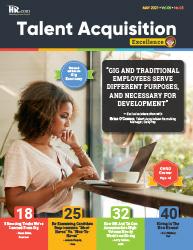

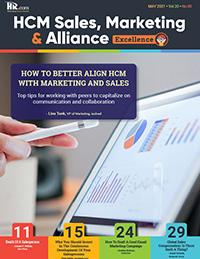

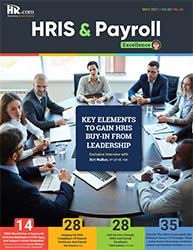

I regularly read and contribute to Leadership Excellence and Talent Management Excellence. I use many of the articles I read to augment my own presentations and I often share the articles with my clients. They are always quick, right on target for the latest issues in my field, and appreciated by my clients. If you want to stay up to date on the latest HR trends, choose a few of the different issues from the Excellence series of publications.
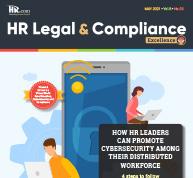
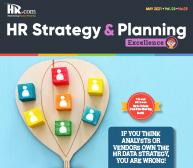



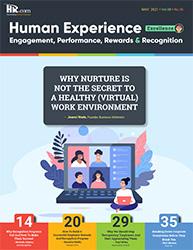 Dave Ulrich
Rensis Likert Professor, Ross School of Business, University of Michigan Partner, The RBL Group
Julie Winkle Giulioni Author, Virtual /Live Keynote Presenter, Inc.’s Top 100 Leadership Speakers
Dr. Beverly Kaye CEO, BevKaye&Co.
Dave Ulrich
Rensis Likert Professor, Ross School of Business, University of Michigan Partner, The RBL Group
Julie Winkle Giulioni Author, Virtual /Live Keynote Presenter, Inc.’s Top 100 Leadership Speakers
Dr. Beverly Kaye CEO, BevKaye&Co.
WHY EXCELLENCE PUBLICATIONS?
We’re eager to hear your feedback on our magazines. Let us know your thoughts at ePubEditors@hr.com
Empathy: The Foundation Of Effective Leadership
Strategies for cultivating this critical skill
By Scott Agnew, Keller Williams Realty
Whenyou hear the word empathy, many think of it as a personal virtue. I believe it is a critical attribute for effective leadership. Empathy is the ability to understand and share the feelings of others, and it's a skill that is critical for building strong relationships and achieving organizational success. Allow me to explain why empathy is so important for leaders, and share some strategies for cultivating this critical skill.
First and foremost, empathy is essential for building trust with your team members. When you are able to empathize with your team members, you demonstrate that you value and respect their opinions and feelings. This creates a positive work environment where people feel comfortable sharing their thoughts and ideas and are more likely to work together to achieve common goals.
One of the most effective ways to cultivate empathy is through active listening. Active listening involves giving the speaker your undivided attention, focusing on what they are saying, asking questions, and summarizing their points. This shows that you are engaged and interested in what they have to say, and helps you understand their perspective. Active listening is particularly effective when combined with non-judgmental language, which involves avoiding language that may make the speaker feel judged or criticized.
Another important aspect of empathy is the ability to put yourself in someone else's shoes. This means
imagining what it would be like to be in their situation, experiencing their emotions, and understanding their thoughts and behaviors. When you can do this, you are better able to anticipate their needs and respond appropriately.
Empathy is also essential in the context of diversity and inclusion. When leaders are empathetic, they are better able to understand and appreciate the experiences of people who are different from themselves. This can help create a culture of inclusivity where everyone feels valued and respected. For example, you may actively pursue opportunities to gain knowledge about diverse cultures and perspectives and demonstrate genuine curiosity when engaging with colleagues from different backgrounds.
In addition to these strategies, self-awareness is also critical for cultivating empathy. Self-awareness involves recognizing your own emotions, biases, and limitations, and being able to regulate your own behavior accordingly. When leaders are self-aware, they can better understand how their actions and words impact others and can adjust their behavior to be more empathetic and effective.
It's also important to recognize that empathy is not the same as sympathy. While sympathy involves feeling sorry for someone, empathy involves understanding and sharing their feelings. This means that empathetic leaders are not only able to connect with their team members on an emotional level but they are also able to respond in a way that is appropriate and effective.
COVER ARTICLE Submit Your Articles Personal Excellence presented by HR.com April 2023 6
Empathy can also be an important component of building trust, accountability, and taking ownership of actions. When team members feel that their colleagues and leaders are empathetic towards them, they are more likely to trust them and feel comfortable taking ownership of their actions. They can be more accountable for their actions, and they will be more likely to accept feedback and use it constructively to grow and develop.
Moreover, demonstrating empathy towards team members can also help build a strong bond that leads to increased satisfaction and connection. When team members feel that their colleagues and leaders care about their well-being, they are more likely to be motivated, engaged, and satisfied with their work. This can create a positive feedback loop where team members are more productive and efficient, which, in turn, further strengthens the bond between them.
Empathy is also a critical component of fostering innovation and creativity within an organization. Encouraging people to think outside the box and take
risks can drive growth and improve problem-solving. However, to achieve this, it's essential to create a supportive work environment where individuals feel safe to express their ideas without fear of judgment or retribution.
So how do you actually convey empathy? To show empathy, it's important to understand that it's not just about the words you use. In fact, 93% of communication is conveyed through voice tonality, body language, speed, and warmer-looking facial expressions, while only 7% is the actual words spoken. Real communication happens with the context, not just the content. Therefore, it's crucial to approach the situation as an adult-to-adult or nurturing parent-toadult. It's important to show up, look them in the eye, and sit with them and comfort them without feeling sorry for them or giving them an alibi or excuse. Rapport is the basis of empathy, and trust is the basis of influence. Remember, empathy is not the same as sympathy. Trust is rapport with comfort and the most important thing we’re talking about is comfort.

Empathy: The Foundation Of Effective Leadership Submit Your Articles Personal Excellence presented by HR.com April 2023 7
When individuals feel that their colleagues and leaders are empathetic towards them, they are more likely to feel comfortable taking risks and sharing their innovative ideas. Empathy helps individuals to connect emotionally with each other, fostering a sense of collaboration that is essential for innovation and creativity. By working together to solve problems and pursue new ideas, individuals can develop a greater appreciation for each other's strengths and abilities, leading to increased trust and mutual respect.
Without a shadow of a doubt, I firmly believe that empathy serves as the very foundation upon which effective leadership is built. By cultivating empathy through active listening, perspective-taking, embracing diversity and inclusion, and developing self-awareness, you can build strong relationships with your team members, create a positive work environment, and achieve organizational success.
Empathy is the key to unlocking your team's full potential and creating a culture of excellence.

Scott Agnew has dedicated his life to helping leaders discover their greatest potential inside themselves. Author of the newly released Long-Term Leader his passion is leveraging personal leadership dynamics to make a positive impact on the people around him. Scott loves to support his followers to find effective, implementable systems for their business and personal growth strategies. The owner of multiple businesses, including several Keller Williams real estate market centers and a Keller Williams Utah region, Scott consistently ranks in the top 200 of all real estate owners in the United States, as verified by RealTrends.
Would you like to comment?

Empathy: The Foundation Of Effective Leadership Submit Your Articles Personal Excellence presented by HR.com April 2023 8
5 Steps To Living In Possibility
The secrets of visionary thinkers
 By Susan Robertson, Sharpen Innovation
By Susan Robertson, Sharpen Innovation
Wetend to believe that famous innovators or other “creative” people have some inherent quality that the rest of us don't have. But the truth is — they don’t. They've simply cracked the code on how to consistently live in a possibility instead of living in an obstacle.
Visionary thinkers see possibilities. Always. Most of us mostly see obstacles, most of the time. We move through work, and life, by addressing whatever next obstacle falls into our path. We problem-solve the next issue on a project, we deal with the next customer complaint, and we address the next challenge with our kids. But too rarely do we look
up, survey the world, and make a conscious choice to shape our world to be the way we want it to be.
Visionary thinkers make that daily choice - to imagine the possibility of a different world, to hold on to that vision, and to refuse to let the obstacles limit their thinking. They live in possibility.
Submit Your Articles Personal Excellence presented by HR.com April 2023 9 Top Pick
Visionary thinkers are open-minded, innovative & imaginative, willing to take risks, optimistic, and collaborative – all skills related to creative thinking. They regularly imagine, consider, and pursue new ideas and solutions.
The good news - all of these creative thinking skills are learnable! Anyone can become a more visionary thinker by learning to leverage the creative genius that’s already hidden inside.
One of the primary barriers to living in possibility is the negativity bias, a cognitive bias, or mental shortcut, that all humans share. It’s the phenomenon that negative experiences have a greater impact
-- on our thoughts, feelings, and behaviors -- than positive experiences do. That seems counter-intuitive, but there’s a wealth of research that proves negative affects us more than positive. As a result, we are much more motivated to avoid negative than to seek positive.
Our brains have evolved to excel at identifying potential negatives, so we can avoid them. It’s a survival mechanism, and it happens in the most primitive part of our brain – the amygdala. The amygdala is responsible for detecting threats and triggering the fight or flight response. It’s laser-focused and lightning-fast at identifying potential problems. This instant identification of
negatives is what can trap us into living in obstacles.
Living in possibility requires refusing to let the negativity bias rule our thinking. There are a few steps that can make a significant impact, helping us to manage this pitfall and transform the way we think.
1. Pinpoint the problem. First, we must be able to spot when the negativity bias is at work. The easiest way to do that is by monitoring one simple phrase we say: “Yes, but….” On the surface, these words seem innocuous. And because we say them and hear them so frequently, they don’t seem like a problem.
5 Steps To Living In Possibility
Submit Your Articles Personal Excellence presented by HR.com April 2023 10
5 Steps To Living In Possibility
However, this short phrase is a massive blockade to creative and visionary thinking. It dismisses any potential positives in an idea or concept before even identifying what those positives might be. Instead, it focuses the energy and attention of both the speaker and the listeners on all the possible negatives. This can easily overwhelm any idea and immediately kill it.
2. Manage your mind. Once you’ve determined the negativity bias is at work (someone said “yes, but…”), the next step is to make a conscious choice to change your thinking. The key is to FIRST identify the potential positives in any idea, before focusing on the negatives.
This sounds easy. But it’s actually quite hard. It’s counter to a basic instinct, so it really does require a conscious choice to think this way, plus very real discipline to put it into practice regularly.
3. Nix the negatives. The next critical step is to refrain from saying the negatives out loud – at least not yet. The truth is, regardless that you’ve consciously chosen to identify the positives first, your brain will subconsciously identify the negatives anyway. It’s instinctive and instant. So even while you’re enumerating positives, your brain will be busy identifying negatives, too. But the simple trick of not saying those negatives out loud will help dramatically. Force yourself to speak out loud, and write down, the positives first.
4. Teach the team. When working with others, ask them to do the same. Help them understand that letting our natural negativity bias dominate the conversation has the potential to immediately kill ANY idea. Let everyone know that, of course, there will be a time to solve the problems in the idea, but the first task is to identify the potential in the idea. If there aren’t enough potential positives, then it’s time to move to a new idea.
But if the idea is visionary and can make a real difference, it’s imperative to hold off on the negativity bias momentarily and allow the brilliance of the idea to shine through.
5. Transform the troublesome term. Once the above steps have led you to a potentially winning idea, it’s time to address the problems with the idea. To continue to remain in possibility, you must change the conversation; you cannot return to “yes, but…” language.
Instead, articulate the challenges as a “how might we…?” question. So, instead of saying “Yes, but it’s too expensive”, instead say “How might we do it more affordably?” This trick of flipping a problem statement into a problem-solving question is a neuroscience brain hack that will revolutionize your thinking and problem-solving.
This process of identifying positive potential first is the ONLY way to find big ideas. Every successful innovation, in any industry or endeavor, is the result
of someone, or a team, choosing to live in possibility in this way.
Visionary thinking requires making space for ideas that, at first, seem scary or difficult. It takes some real courage to push past our immediate “yes, but…” response and instead focus the conversation on “what if…?” If we don’t hold ourselves accountable to look for the positives, we’ll never consider nor implement any truly new ideas. Visionary thinkers must master this skill and learn to live in possibility.
Susan Robertson empowers individuals, teams, and organizations to more nimbly adapt to change, by transforming thinking from “why we can’t” to “how might we?” She is a creative thinking expert with over 20 years of experience speaking and coaching in Fortune 500 companies. As an instructor on applied creativity at Harvard, Susan brings a scientific foundation to enhancing human creativity.
Would you like to comment?

Submit Your Articles Personal Excellence presented by HR.com April 2023 11
How To Work With & Lead People Not Like You
Practical tips for working with and leading a diverse team
By Kelly McDonald, McDonald Marketing
Itdoesn’t matter where you live, demographics everywhere are changing quickly. Increasingly, you are working with people who are not like you. They may be of a different race or ethnicity, different gender or gender identity, may not speak your language fluently, may come from different countries, cultures, or backgrounds, maybe LQBTQ+ may be of a different generation, or may simply have a different approach to work than you have.
And demographics aren’t the only way we can be different from one another. Consider these diverse types of personalities and traits:
● Morning people & night owls
● Introverts & extroverts
● Parents & non-parents
● Creative thinkers & analytic thinkers
● Risk takers and the risk-averse
● Listeners & talkers
● Tech-savvy & tech-phobic
● Rural & metro
● Military & civilian
The list goes on and on. So how do you work effectively with someone with whom you may not see eye-to-eye or who has a totally different approach to work than you do? And as a leader, how do you bring
your diverse team together to be productive, despite their differences?
Here are four tips for working in a diverse environment
Tip 1: Find Common Ground
When working with someone who is different from you, the first thing you typically see are the differences: gender, age, style of dress, color of skin, etc. But people are people – we have families, friends, kids, or pets. We have favorite foods, movies, books, hobbies, or sports teams that we like.
When you find common ground with another person, it becomes a shared bond, something that connects you. You can use anything to start a conversation with someone, with the goal of finding common ground. For example, if someone is wearing a sports ballcap, I will ask if that’s their favorite team. Even if there is nothing else besides weather or temperature, I will use that as a conversation starter. Here are some examples:
● “That’s a cool necklace you have on. My mom makes jewelry – where do you find your pieces?”
● “Your lunch looks and smells so good – do you cook? I am trying to do more cooking these days.”
● “Do you think they’ll ever fix the heat in this building? Are you as cold as I am?”
Submit Your Articles Personal Excellence presented by HR.com April 2023 12
Tip 2: Agree to Disagree
Different perspectives, approaches, and viewpoints can often lead to friction at work. Not everyone sees things the same way, and this can result in challenges and tension when people try to “win” an argument or persuade others to their point of view. Instead, say: “I see it differently.” This phrase works magic because when you say, “I see it differently,” you’re not being antagonistic, judgmental, or superior. You’re not being combative or even trying to persuade the other person. You’re simply stating that you see it differently.
This will likely lead to a constructive conversation about how you see things. You’ll share your point of view, and a discussion will follow. These four words can turn a debate into a discussion.
Tip 3: Take the Emotion Out of It
Most of us try mightily to like the people we work with. And we may feel like we’re doing something wrong when we don’t like someone. Perhaps we feel we should just try harder. But liking and disliking are emotions, and at work, you can leave emotion out of it. You don’t have to like someone to be able to work effectively with them. You don’t have to have them over for dinner or socialize with them. You just have to work with them.
Sports teams do this all the time. A woman who plays on a soccer team once told me that she didn’t really like about half of the people on her team. “But when we get out on the field, we have a job to do, and we do it.” When you realize that it’s OK to not like someone, it frees you to focus on the job at hand. Of course, you must be respectful and professional at all times, but you don’t have to like someone to work on a budget forecast with them.
How To Work With & Lead People Not Like You Submit Your Articles Personal Excellence presented by HR.com April 2023 13
Tip 4: Sometimes People Are Going to Say the Wrong Thing. Bring it Back to Business

A client of mine told me about an engineer at their company who was in a meeting and was “peacocking” a bit – trying to show the rest of the group how smart he was. Someone made a suggestion, and he replied, “That’s the most retarded idea I’ve ever heard.” It was an outrageously offensive comment. Yet everyone knew this guy was not trying to mock mentally disabled people. He was likely using a word he’d used all his life, completely unaware of how inappropriate and offensive it was. It’s no excuse – it was wrong.
Here is how my client addressed the issue: “Ted, not sure if you know what you said in today’s meeting. Here’s what you said. Here’s why it’s unacceptable. And here’s why it can never happen again - it has no place in this company or any business conversation. Are we clear?”

The engineer was mortified. He truly hadn’t realized he’d said that, and he was very remorseful. But the
fact that his supervisor brought the conversation back to business immediately and kept the focus on constructively moving the business forward. Obviously, if this continued to be a problem, the company would address it, but sometimes people say the wrong thing, not out of malice or meanness, but out of ignorance and carelessness. Give people one chance to right the wrong and bring it back to business.
Would you like to comment?
How To Work With & Lead People Not Like You Submit Your Articles Personal Excellence presented by HR.com April 2023 14
Kelly McDonald is a business authority specializing in consumer trends and changing demographics. She is the president of McDonald Marketing and the author of four bestselling books.
The Silent Risk – Never Take ‘K(no)w’ For An Answer!
Embracing emergent conversations for change and innovation in business meetings
By Robert Lengel, LeaderWork Inc.
Imaginelistening to a beautiful piece of music. Now imagine staring at a graphic display of the distribution of notes that compose that piece. What happens to the music when we only see the notes?
There is so much business thinking that focuses on the notes. Surveys, polls, and questionnaires that end in a graphic display of individual opinions leave us without access to the music we seek. That music is only emergent if we play the notes together in conversations not knowing and willing to accept the results. In traditional business meetings, not knowing and being open to surprises are not comfortable places for us to be. We tend to assume away or dampen emergence by imposing time limitations, preconceived agendas and employing facilitation techniques to stay on track and cancel emotions and feelings.
The focus in these meetings tends to be on analyzing the information we think we know displayed on graphs, spreadsheets, and PowerPoint presentations and pursuing answers to questions
we think we know as desirable ‘takeaways’. These meetings work fine when the task is to use what we think we know publicly to manage what is and defend the status quo.

Submit Your Articles Personal Excellence presented by HR.com April 2023 15 Top Pick
When change, learning, and innovation are our goals, however, we need new kinds of meetings that enable honest and free exchanges designed to surface what we don’t know and invite surprise outcomes that are hidden in our silence. This hidden knowledge is not accessible to participants in the results of third-person analytical exchanges in conference rooms.
They have artificially denied access to their music because meeting conditions force them to play acceptable public roles as objective analysts whose reality reflects the distribution of notes.
In my new book “A Place for T– Giving Voice to the Tortoise
in Our Hare-Brained World”, I share decades of learnings about designing, convening, and hosting these new kinds of meetings that disturb the silence and embrace the risk of not having them.

Organizations face an existential risk in failing to disturb the silence that grows like cancer in their work cultures. That silence lies hidden in the untapped emergence of honest conversations that we fail to have because we don’t trust each other and have hidden agendas or other personal interests that cause us to hide behind clouds of data. This risk of silence is most critical in meetings with boards, advisory councils, or peers where change
or critical strategic topics are at issue.
Each of these stakeholders has an interest in the success of our businesses and has a perspective we don’t have, but their input tends to be unconsciously limited – or perhaps uninvited. Maybe this limitation is out of fear of being vulnerable and losing control or a belief that others just don’t have the knowledge and experience to offer valuable input. I think the real reason, however, is a lack of courage to face ‘ the truth’.
Over time, participants in these meetings become disinterested and passive, and their low expectations become self-fulfilling prophecies. If you focus on listening in these meetings, you can feel the silence in the room.
Silence can be surfaced, but it takes courage. I have hosted many multiple-day strategic conversations in which a broad array of organizational stakeholders participated together in pursuit of culture change. In all cases, previous efforts had stalled, new ideas were not forthcoming, trust was low, emotions were running high, and honest communication was essentially non-existent.
Typically they had tried multiple failed approaches to ‘right their ships,’ and we were their last gasp effort. In most cases, these failures were a result of a fear to face their undisturbed silence. One method I used to expose this silence is called, the ‘conversation walls.’
The Silent Risk – Never Take ‘K(no)w’ For An Answer!
Submit Your Articles Personal Excellence presented by HR.com April 2023 16
Participants would sit at tables with four piles of different colored paper set before them – in this example, one blue, one green, one red, and one pink. I would first ask them to reflect on words or phrases they heard company leaders saying to external stakeholders promoting the public image. They were then asked to record those words and phrases separately on pieces of blue paper. When they had finished, I would collect those blue sheets and post them anonymously on a large sticky wall under the title ‘external conversations.’ While blue sheets were being posted, I would ask participants to repeat this exercise, only this time recording words or phrases typically shared publicly by leaders in internal meetings on green sheets.
These sheets were collected and posted on another sticky wall under the title of ‘public conversation in meetings.’ This sequence was repeated two more times. Red sheets were posted with words or phrases reflecting private conversations trusted colleagues were having in the hallway after public meetings –‘hallway conversations.’ The final posting recorded conversations on pink sheets participants were having with themselves in private moments – ‘personal conversations’.
When the wall postings were complete, participants were asked to walk around the room in silence imagining they were archeologists observing etchings on four cave walls. Their task was to take
personal notes, return to their tables, share what they saw with their table mates, and create table stories about what those etchings revealed about the ‘truth’ of their company’s reality.
This is a sobering exercise. The differences revealed on those wall displays give voice to what was previously silent. A lot of pent-up negativity, cynicism, and emotion surfaces that were never given the time and place for expression in traditional meetings. That ‘personal conversation’ wall, for example, often revealed deeply unhappy individuals who were questioning both their lives and work, and the integrity of company leaders. The sound of their silence tends to be deafening when confronted at this scale.
To strike a positive note, I ask the tables to end their stories with an appreciative reflection on what questions were emerging that if explored or answered now, would make for a healthier work environment and more satisfying work experience. These previously silent questions are the first seeds that need to be planted to grow their desired culture.
The lesson here is simple. If organizations have problems with trust, communication, morale, team dysfunction, stalled change initiatives, unsatisfying strategic planning, or disappointing leadership development efforts, they cannot resolve them based on a false sense of reality. Like icebergs, the public conversations in organizations are just the tip
of that reality visible above the surface. Most of that iceberg lies beneath the surface in silence.
Can we achieve the real and sustainable change we desire by chipping away at the intellectual ice we can see? I don’t think so. Change requires empowering emotion and surprise that lies beneath the surface and suspending our search for answers from the notes until we have questions that open paths to the music. Access to those questions is more likely to emerge sitting around a campfire mesmerized by the flickering flame that invites imagination than sitting around a conference table staring at a PowerPoint that invites debate. We need new kinds of meetings that demand we never take ‘k(no)w’ for an answer!
Dr. Robert H. Lengel , author of the new book, “A Place For T: Giving Voice To The Tortoise In Our Hare-Brained World,” is Associate Professor emeritus at the University of Texas at San Antonio and president of the consulting firm LeaderWork Inc.
Would you like to comment?

The Silent Risk – Never Take ‘K(no)w’ For An Answer! Submit Your Articles Personal Excellence presented by HR.com April 2023 17
HRCI® & SHRM® CERTIFICATION PREP COURSES
GROUP RATES AVAILABLE
For HR Professionals
Show that management values the importance of the HR function, and has a commitment to development and improvement of HR staff.
Ensure that each person in your HR department has a standard and consistent understanding of policies, procedures, and regulations.
Place your HR team in a certification program as a rewarding team building achievement.
For Your Organization
Certified HR professionals help companies avoid risk by understanding compliance, laws, and regulations to properly manage your workforce.
HR Professionals lead employee engagement and development programs saving the company money through lower turnover and greater productivity and engagement.
A skilled HR professional can track important KPIs for the organization to make a major impact on strategic decisions and objectives, including: succession planning, staffing, and forecasting.
HR.com/prepcourse CALL TODAY TO FIND OUT MORE 1.877.472.6648 ext. 3 | sales@hr.com
1 Less expensive than a masters or PhD program, and very manageable to prepare with
2. legislation and best practices
3. Recognized, Industry benchmark, held by 500,000+ HR Professionals
Group Rate Options
We offer group rates for teams of 5+ or more for our regularly scheduled PHR/SPHR/ SHRM or aPHR courses.
For groups of 12+, we can design a more customized experience that meets your overall length of the course.
Groups rates for HRCI exams are also available as an add-on.
All group purchases come with 1 year of HR Prime membership for each attendee to gain the tools and updates needed to stay informed and compliant

CALL TODAY TO FIND OUT MORE 1.877.472.6648 ext. 3 | sales@hr.com | HR.com/prepcourse
1 2 3
What's Your Next Act?
Reframing career paths and opportunities in the new world of 21st-century work and careers
By Jeff Schwartz, Gloat
Theworld of work is being disrupted in more profound ways than anything we imagined. Yes, we've been through the Great Resignation, the Great Reassessment, the Great Reshuffling, Quiet Quitting, and Quiet Hiring – and while these are indeed unsettling, they are all based around the construct
of the traditional full-time job –whether that job is carried out on-site in an office or remotely in a cabin in the Adirondacks or some city promoting work for digital nomads. Even the burgeoning trend of the four-day workweek begins with an individual working a full-time job – often in a traditional career.
While employers reframe what is important to them based on their views of job design and where they want people to work and employees increasingly seek more flexibility and purpose, a more fundamental shift to our work lives is unfolding.

Submit Your Articles Personal Excellence presented by HR.com April 2023 20
The default career path has traditionally been a linear progression, with individuals having a full-time job within a single company or at a succession of companies. But technology, business, and societal changes are enabling – some might say requiring– new approaches to what we call our career.

People living 21st-century lives, whether in their 20s or 70s, have different professional and personal opportunities than existed 30, 40, or 50 years ago. The whole world, including the milieu of work, has changed. So, no matter your age, we're all trying to figure out how we build work lives that are changing at a different rate than they did in the last century. A 25-year-old will
have to learn new ways of working throughout their professional life, some of which we can't anticipate today. Even though we've been working on some form of ChatGPT for 10 years, most of us were unprepared for the changes it is releasing. And we are just beginning – the technology will only improve.
We can expect change to continue at its rapid pace and to bring with it more disruption. Over the last few months, we have witnessed companies laying off from 5% to 10% of their employees. Of course, the uncertainty is scary and brings with it many challenges. But we can use this period of economic turbulence to reframe our view of what work is – and what it could be. We can think about what will
be our next act, not necessarily our next job.
A Career Portfolio View
This approach requires a mindset shift – from looking at your career as a series of full-time jobs to embracing a portfolio view of your career, which may include a combination of full-time work, gig projects, entrepreneurship, training and development, and interludes where we focus on personal pursuits including raising children, taking care of parents and friends or a detour to take time for ourselves.
Our professional lives may no longer be a linear progression up the career ladder but will likely involve various roles and activities throughout our lives.
What's Your Next Act?
Submit Your Articles Personal Excellence presented by HR.com April 2023 21
My own experience is an excellent example of embracing that next act. When I retired from Deloitte, I considered briefly that I might stop working full-time. Or I could have looked for a similar job, taking a senior position at another consultancy. Instead, I decided to combine the three things I wanted to do. I'm working with a startup pioneering the future of talent marketplaces and ecosystems, teaching MBAs and executive education on the future of work, and writing books – I’m starting on the third now. I began thinking about doing all those things years before I retired from Deloitte.
Wherever you are in your career journey, think about your range of options. You can look for another full-time job, but perhaps a better approach is to view your next act as one part of your portfolio and pursue multiple options simultaneously. I'm not arguing against pursuing full-time jobs. But if you think you have only one route in the future, it's much more daunting than thinking you have multiple options.
Eliminating the Roadblocks
One of the biggest roadblocks when people are looking for their next act, whether it's the 25-year-old or the 65-year-old, is they tend to put all of their energy into looking for an equivalent or a better full-time job. But we can take some of that effort, and, instead of only sending out resumes and perusing job boards, explore the project and gig opportunities that are available – not just to tide you over but to
potentially help you grow into a different career that is of interest to you or that lets you develop new skills.
The summary view is to pursue multiple opportunities and paths simultaneously, even if three days of the week you're focusing on finding a full-time job, one day is looking at projects and gig options, and another is exploring entrepreneurial opportunities. Consider all available options.
Companies will also have to adapt. Instead of filling open positions with full-time staff who will follow a linear progression within the company, employers must consider a broader range of options and new work models that embrace gig workers and entrepreneurship, even encouraging staff to develop new skills through side hustles.
Once you start looking at the numerous routes, you'll find there are a lot of resources that you can access.
For example, Google started an internal program in 2017 to train and support coders and data scientists. They've trained a quarter of a million people in the last few years, including blue-collar workers who went from $30,000 a year to earning $65,000 or more as an IT support person and college graduates who wanted to add marketable skills to their Bachelor of Arts degree. There are so many on-demand courses available; all you need is access to the internet, and you can learn on your own time.
That's just one example. The disruption we are seeing, while scary, also presents great opportunities. Most of us are tightly wound around the idea of a career that proceeds from one full-time job to another without giving it much thought. It doesn't matter where you are on your professional journey – whether you are a 25-year-old just starting out, a 45-year-old who lost their job, or a 65-year-old retiring, your next act could be a different option from your portfolio. Perhaps a new opportunity awaits you, one where you could make a great living and also brings more independence and creativity than you had before or had envisioned. At least consider it.
Jeff Schwartz is the VP of
Insights
&
Impact
at Gloat . He is a global advisor, author, researcher, executive and professor exploring the future of work, workforces and workplaces.
Would you like to comment?
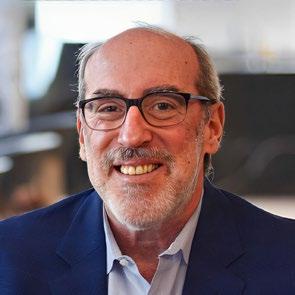
What's Your Next Act? Submit Your Articles Personal Excellence presented by HR.com April 2023 22
Embracing Uncertainty And Cherishing Time With Loved Ones
A guide to finding happiness through meaningful relationships and purposeful living
By Jim Stovall, Narrative Television Network
I’velong believed in the wisdom that we need three things in life to be happy: something to do, someone to love, and something to look forward to. The people around us are the key to these elements. At best, life is uncertain, and the future is a mystery and an adventure. All of our planning and preparations can be
shifted immediately on the winds of fate. The life we often find ourselves living is not the one we planned, but it can be amazing and far exceed what we had expected. Once we gather the right people around us, we must relate to them and every aspect of our lives with passion.

Submit Your Articles Personal Excellence presented by HR.com April 2023 23 Top Pick
More than a thousand years ago, an anonymous monk wrote, “If only death is certain and the time of death is uncertain, how should we live?” The only answer to that haunting question is that we should live our lives with people we love and attack every moment with passion. Mark Twain will be forever remembered as a humorist, but he also wrote some of the most powerful and poignant words ever known. He said, “What makes a good life? There isn’t time, so brief is life for bickerings, apologies, heartburnings, callings to account. There is only time for loving, and but an instant, so to speak, for that.”
When we think of our personal and professional lives as a series of hours, days, weeks, and years, and we consider how brief our time here truly is, we must rededicate ourselves to the notion of living with power and passion surrounded by those we love and respect.

Any commodity, whether it be oil, gold, or time itself, becomes more precious or valuable with scarcity. The term “spending time” is very appropriate because every moment that passes diminishes the capacity of life we have in front of us. I do not intend these thoughts to be morbid in any way. Instead, it is my hope that they will encourage you to see the days of your life as a gift and invest each of them wisely.
In my book, The Ultimate Gift, which became the basis for several sequel novels and a movie trilogy, I took my main character and readers on a journey of discovery. In the midst of that journey, I posed the question, “How would you live your life if you knew today was your last day?”
If we are living our lives properly, we should already be living each day as if it were our last because, inevitably, someday, it will be.
As you go through your day today, fill each moment with the people and the pursuits that fill you with passion.
Jim Stovall is the President of the Emmy-award-winning Narrative Television Network as well as a published author of more than 50 books—eight of which have been turned into movies. He is also a highly soughtafter platform speaker.
Would you like to comment?

Embracing Uncertainty And Cherishing Time With Loved Ones
Submit Your Articles Personal Excellence presented by HR.com April 2023 24
The Value Of Personal DEI
How embracing DEI can enhance your career, relationships, and life
By Dr. Randal Pinkett, BCT Partners
Bynow, most leaders are familiar with the business case for diversity, equity, and inclusion (DEI). There is a plethora of arguments supporting the value of DEI for their companies, including how DEI improves the bottom line. But before any business can implement an effective program that eliminates barriers and mitigates bias, individuals need to understand how they will benefit from DEI on a personal level, not just an organizational one. I refer to the arguments supporting the value of DEI to individuals as “the personal case for DEI.”
In my thirty years as a DEI expert and consultant, I have seen how personal DEI – greater diversity, equity, and inclusion in one’s personal life – enhances people’s careers, performance, and relationships. Here’s what personal DEI can do for you as a leader and for everyone with whom you work.
Enhanced Personal Growth
Let’s start with personal growth. Diverse relationships with people from different backgrounds and perspectives positively challenge you to move beyond your comfort zone into your growth zone and become a better person today than yesterday. They also lead to a richer human experience by exploring diverse cultures, including music, art, food, religion, language, clothing, history, and more. If experience is the best teacher, diversity creates the best classroom!
For example, I vividly recall an experience when I studied abroad and did not find the food to be to my liking. I had become accustomed to my mom’s
home cooking! During the semester break, rather than teaching me how to cook the favorite dishes from my culture, my mom gave me invaluable advice: Ask someone from another country to teach you a dish from their culture. When I returned to campus, I learned recipes from cultures across the globe, which also prepared me to navigate those cultures years later as a business professional.
Greater Diversity of Thought
DEI enables you to tap into the diverse thinking of others to make better decisions, generate better ideas, improve problem-solving, and foster greater innovation. A harrowing example of what can happen when you don’t have diverse perspectives on your team is captured in numerous books and movies about the Cuban Missile Crisis of the John F. Kennedy presidential administration.
President Kennedy had several intelligent men around the table advising him about how to deal with the emerging crisis of Soviet missiles being erected in Cuba. The term groupthink is derived from the situation that emerged in those meetings. Dissenting views were drowned out by the race for a speedy and unified solution. The group began to think as one, and it nearly brought the U.S. to war with the Soviet Union.
The practical takeaway here is that you want your team members to all be committed to a common purpose, but you also want there to be enough difference that you don’t all think the same way.
Submit Your Articles Personal Excellence presented by HR.com April 2023 25
“It’s making sure you have little risk of being blindsided by something that a diverse team would have known about and would have identified as an opportunity or a risk. I think it brings far greater confidence to the decision-making when you know you are being supported by people who have far more diverse points of view,” says Francois Hudon, a former executive with the Bank of Montreal.
Expanded Network of Relationships
In her TED talk, “The Politics of Fiction,” Turkish storyteller Elif Shafak argues that we increasingly find ourselves immersed in “communities of the like-minded,” that is, surrounded by others who reflect our social and cultural identity. The danger of being encircled by people who are like you is that you can become more prone to produce stereotypes and assumptions about those who are not like you – cast projections onto those outside of the communities to which you belong.
When you are more intentional about seeking diverse relationships, it not only enhances your ability to navigate differences in your personal life but also in your professional endeavors. For example, researchers at Ohio State University and the University of Akron found that “workers with more diverse personal relationships were, not surprisingly, better at building a racially diverse network on the job. These individuals utilized this broader network to pursue extra tasks beyond their basic responsibilities and appeared to be more trusting of their supervisors.”
Increased Range of Opportunities
Diverse work teams are known to be better at assessing risks and gathering accurate facts, and companies with inclusive leaders report higher innovation rates. According to a study by Deloitte, inclusive leaders increase team performance by seventeen percent, increase decision-making quality by twenty percent, increase team collaboration by twenty-nine percent, and increase feelings of inclusion by seventy percent.
Another study by the Australian Institute of Company Directors found that organizations with inclusive cultures were two times as likely to meet or exceed
financial targets, three times as likely to be high performing, six times more likely to be innovative and agile, and eight times more likely to achieve better business outcomes.
It’s a no-brainer that having a larger and more diverse professional network will lead to higher-performing teams and present a wider spectrum of opportunities, but it all starts with increasing the diversity of your personal relationships, and this must happen on your own time.
More Positive Evaluations, Earlier Promotions, and Higher Compensation
On a regular basis, I introduce people that I believe should know each other. For example, I recently connected the CEOs of two companies that are strategic partners to my firm, BCT Partners, with the hopes they could jointly pursue a contract. I was proud to find out that they won the contract by working together. I make these kinds of introductions for any number of reasons: there is an opportunity people could pursue together; both people share a common interest; one person has knowledge, skills, or abilities the other person is in search of; and the list goes on.
While it is not my intent to derive a benefit from making these connections, it is often the case that I do derive a benefit, whether it is because they involve me somehow in their collaboration or because of the future goodwill it engenders with both parties. There are several terms that refer to this valuable role I often play including broker, connector, and even a Latin phrase, “Tertius gaudens,” which means “the third who benefits.”
Interestingly, the benefits of making these connections go even further than I imagined. Research has found that individuals with relationships that are rich with opportunities to connect with people would otherwise be disconnected, “receive more positive evaluations, earlier promotions, and higher compensation.” In other words, personal DEI can lead to improved career performance, advancement, and even earnings.
The Value Of Personal DEI
Submit Your Articles Personal Excellence presented by HR.com April 2023 26
Expanded Civic Engagement and Positive Outcomes for Others
One of the personal values I learned from my parents when I was young is that of service to others. From volunteering with various charitable causes to participating in activities at our church to engaging in community service programs, my parents taught me that helping others is not only an opportunity; it is a responsibility.
I’ll never forget an occasion when I had already committed to volunteer with a local charity, and it required me to get up early. The night before when I told my mom I was no longer planning to go because I preferred to sleep, she immediately gave me a very stern reminder that less fortunate people were depending on me.
Let’s just say I was up bright and early the next morning! More importantly, that experience, and so many others during my years growing up, reinforced the importance – the value – of helping others. Little did I know that personal DEI also has a positive relationship with community service.
A Princeton University study entitled “Do Differences Make a Difference?” found that “increased exposure
to diversity is positively associated with civic engagement” and that “individuals are more likely to perform activities and services in order to improve outcomes for others, and in doing so, they are making a difference in their homes, neighborhoods, workplaces, churches, and communities.” Therefore, if you are like me and you are constantly questioning what more you can do to improve the world around you, personal DEI is an answer.
These are compelling arguments for the value of personal DEI. This suggests that while you do not have to have the most diverse, equitable, and inclusive relationships, you can significantly benefit from having diversity, equity, and inclusivity in your relationships. It also suggests that while you do not have to understand all cultures, you can significantly benefit from seeking an understanding of different cultures.
It all starts with improving your personal DEI, and that must be something for which you are regularly willing to commit time to connect with people who are different than you.
Dr. Randal Pinkett, the author of DATA-DRIVEN DEI, is an entrepreneur, innovator, and DEI expert. He is the Co-founder, Chairman, and CEO of BCT Partners, a global research, training, and data analytics firm whose mission is to provide insights about diverse people that lead to equity. An international public speaker, Dr. Pinkett is the author or co-author of Black Faces in High Places, Black Faces in White Places, Campus CEO, and No-Money Down CEO Dr. Pinkett was also the Season Four winner of the reality television show, The Apprentice
Would you like to comment?

The Value Of Personal DEI Submit Your Articles Personal Excellence presented by HR.com April 2023 27
Turn Your Experience Into Leadership Influence








How women can position themselves to make an impact
By Davina Ware, The Complete Leader





Therehas been no other time in history when women have made the strides they have today—breaking ground in business influence, leading technological advancements, and serving as a catalyst for social change. Although these achievements are exemplary, many women are still shrinking—especially in the workplace. Imposter syndrome creeps up and affects women at all levels of the career ladder.
The Question Is, Why?
Women are more degreed than ever and hold increasingly more leadership positions in the business world. However, there’s an invisible wall that keeps much hiding in their task lists and not tapping into the mountain of greatness they carry that could remedy innumerable work issues. It all starts with recognizing, positioning, and showcasing your gifts, talents, and experiences to influence the organization you work for.

Top Pick Submit Your Articles Personal Excellence presented by HR.com April 2023 28
First Things First, Don’t Be Shy About Your Greatness! (This includes my fellow introverts.)
Perhaps it is because women have been taught to be polite and likable that, typically, they don’t speak up as much as their male counterparts in the workplace. It can sometimes feel like career sabotage to share your accomplishments with your team. That would be true if you were just bragging about your abilities. But there’s a difference between being confident about what you bring to the table and positioning yourself as superior to your peers. You can be both self-assured and a magnetic team player at the same time. Become more discerning of moments to share your instincts and experience to solve problems that will move your team forward.
Let’s Talk About Your Experience

When is the last time you quantified and qualified the work you’ve done over the past few years? Women usually wear many hats and get so engrossed in day-to-day responsibilities that they don’t realize their capabilities have grown. Recognizing the leveling up of your expertise and the new skills you’ve picked up along the way is the foundation for building your personal brand. Branded professionals often have more fulfilling careers with effortless influence that creates opportunities.
How Do You Build Your Influence?
You start by leading yourself well. No one knows what you need more than you do. Think about a leader who you respect and trust. What qualities do they have that bring out the best in you? Consider how you can do that for yourself. Leading the charge in your professional development builds unshakable faith in both your uniqueness and your quirks. This naturally gives you an authority in many situations. But this is just the beginning!
You Should Also Determine What You Want to Influence
The advancements women have made began with the power to inspire change. You can spark positive change in your work culture, processes, training programs, roles and responsibilities, team synergy, relationships with customers, and the direction of your team (possibly your entire organization). The key here is to be intentional. Rome wasn’t built in a day, and you can’t be all things to all people. Think of it this way, when you reach the top of your career ladder, what do you want to have been involved in that has brought about innovation or advancement?
Sure, it may be a paradigm shift to step out of your task list to impact the bigger picture, but it’s worth your while. No one has the exact same background, motivations, competencies, and vision as you. That means you are equipped to influence your work environment in ways no one else can. Be confident in what you have to offer and stop depriving your sphere of influence of the resolutions you can bring.
Davina Ware is a career strategist, advisor, and coach with Price Associates. and The Complete Leader, a leadership community supporting leaders at every stage of the leadership journey. She is certified by the International Coaching Federation and is also the founder of Upwardly Paved Path. She helps professionals get out of their own way to transition into careers of authority that utilize their gifts and talents.
Would you like to comment?

Turn Your Experience Into Leadership Influence
Submit Your Articles Personal Excellence presented by HR.com April 2023 29
How To Manage Anxiety At A New Job
5 tips to help
By Dr. Doug Newton, SonderMind
Startinga new job can be an exciting and challenging experience. However, it can also trigger feelings of anxiety and stress, especially if you are someone who struggles with anxiety in general. In this article, we will explore some strategies to manage anxiety at a new job and help you overcome the challenges and stress of starting a new job.
Is It Normal to Have Anxiety After Starting a New Job?
It's important to acknowledge that feeling anxious or nervous when starting a new job is normal, and it’s common for changes in life to cause some stress and anxiety. You are stepping into a new environment with unfamiliar people and expectations, and that
can be intimidating. Try not to be too hard on yourself for feeling anxious. Remember that most people experience some level of anxiety when starting a new job, and it's a natural response to a new situation. Let’s work on reframing your anxiety into excitement, and setting yourself up for success in your new role!

Submit Your Articles Personal Excellence presented by HR.com April 2023 30
How Long Does New Job Anxiety Last?
New job anxiety can last for a few days, weeks, or even months, depending on the individual. However, most people find that their anxiety levels decrease over time as they become more familiar with their new environment and job responsibilities.
If you’re feeling that your symptoms are becoming overwhelming, you may want to consider exploring options through therapy. In addition to working with a therapist, here are 5 tips to help you manage stress and anxiety at a new job.
1. Be prepared on your first day to help alleviate stress at a new job
One of the best ways to manage anxiety about a new job is to be well prepared. Take the time to research the company, understand your job responsibilities, and learn as much as you can about your new role. If you’re going into an office, make sure you know which route you’re taking, lay out your clothes the night before, and do your best to get a good night's rest. This will help you feel more confident and in control, and you will be better equipped to handle any challenges that come your way.
2. Create a routine to help manage new job stress
Establishing a routine can help you feel more in control and reduce your anxiety levels. Plan your schedule and make sure you give yourself enough time
to get ready for work. Start your day with a healthy breakfast, and allow some time for exercise or meditation to help you relax and prepare for the day ahead. If you work from home, set boundaries with family members or roommates to minimize distractions during work hours.
3. Connect with colleagues
Building connections with your colleagues can be a great way to reduce anxiety and make the transition to a new job smoother. Try to be friendly and approachable, and make an effort to get to know your colleagues — make it a point to have lunch with a peer during your first week. Having people you can talk to and share your experiences with can help you feel more comfortable and supported.
4. Practicing self care to help ease work anxiety
Taking care of yourself is essential for managing anxiety, especially when starting a new job. Make sure you get enough sleep, exercise regularly, eat a healthy diet, and take time for activities that you enjoy. If you feel overwhelmed or stressed, take a break and practice some relaxation techniques, such as deep breathing, meditation, or yoga. Positive affirmations can also be a great way to ground yourself when you’re feeling stressed.
5. Seek support to help manage anxiety and stress
If your anxiety levels are high or you are struggling to manage your
stress levels, consider seeking professional help. A therapist can help you develop coping strategies and techniques to manage your anxiety and stress levels. Don't be afraid to reach out for support if you need it.

Final thoughts
Starting a new job can be stressful and overwhelming, but with the right mindset and strategies, you can manage your anxiety and make a smooth transition. Remember to be kind to yourself, prepare as much as you can, create a routine, connect with your colleagues, practice self-care, and seek support if needed. By taking these steps, you can overcome new job anxiety and enjoy a successful and fulfilling career.
Dr. Doug Newton, MD, MPH is the Chief Medical Officer at SonderMind.com . The focus of Doug’s efforts is to drive efficient and effective solutions, and his data driven approach allows him to develop and evaluate quality metrics and ensure clients are receiving the best clinical outcomes possible. Doug holds a Doctor of Medicine from the University of Wisconsin and a Master of Public Health degree from Yale University.
Would you like to comment?
How To Manage Anxiety At A New Job Submit Your Articles Personal Excellence presented by HR.com April 2023 31






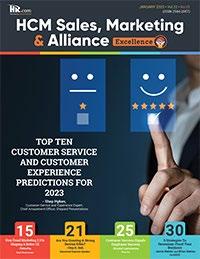






Like to submit an article? Use our online submission form or for more information go to www.hr.com/ExcellencePublications Publications 13 Targeted Publications to Reach Your Audience Informing, Educating, Enlightening and Assisting HR professionals in their personal and professional development, the Excellence series offers high-quality content through the publications!









 - Robert Lengel, President, LeaderWork Inc.
- Robert Lengel, President, LeaderWork Inc.

 - Davina Ware, Advisor, Coach, Price Associates and
Leader
- Davina Ware, Advisor, Coach, Price Associates and
Leader

















 Dave Ulrich
Rensis Likert Professor, Ross School of Business, University of Michigan Partner, The RBL Group
Julie Winkle Giulioni Author, Virtual /Live Keynote Presenter, Inc.’s Top 100 Leadership Speakers
Dr. Beverly Kaye CEO, BevKaye&Co.
Dave Ulrich
Rensis Likert Professor, Ross School of Business, University of Michigan Partner, The RBL Group
Julie Winkle Giulioni Author, Virtual /Live Keynote Presenter, Inc.’s Top 100 Leadership Speakers
Dr. Beverly Kaye CEO, BevKaye&Co.




 By Susan Robertson, Sharpen Innovation
By Susan Robertson, Sharpen Innovation





































